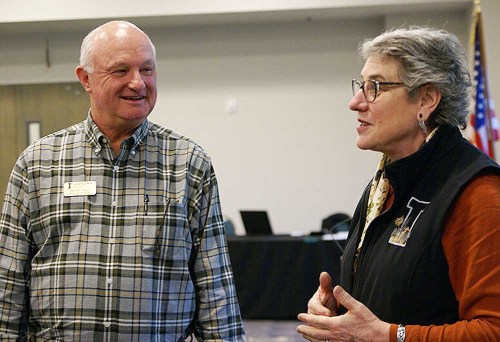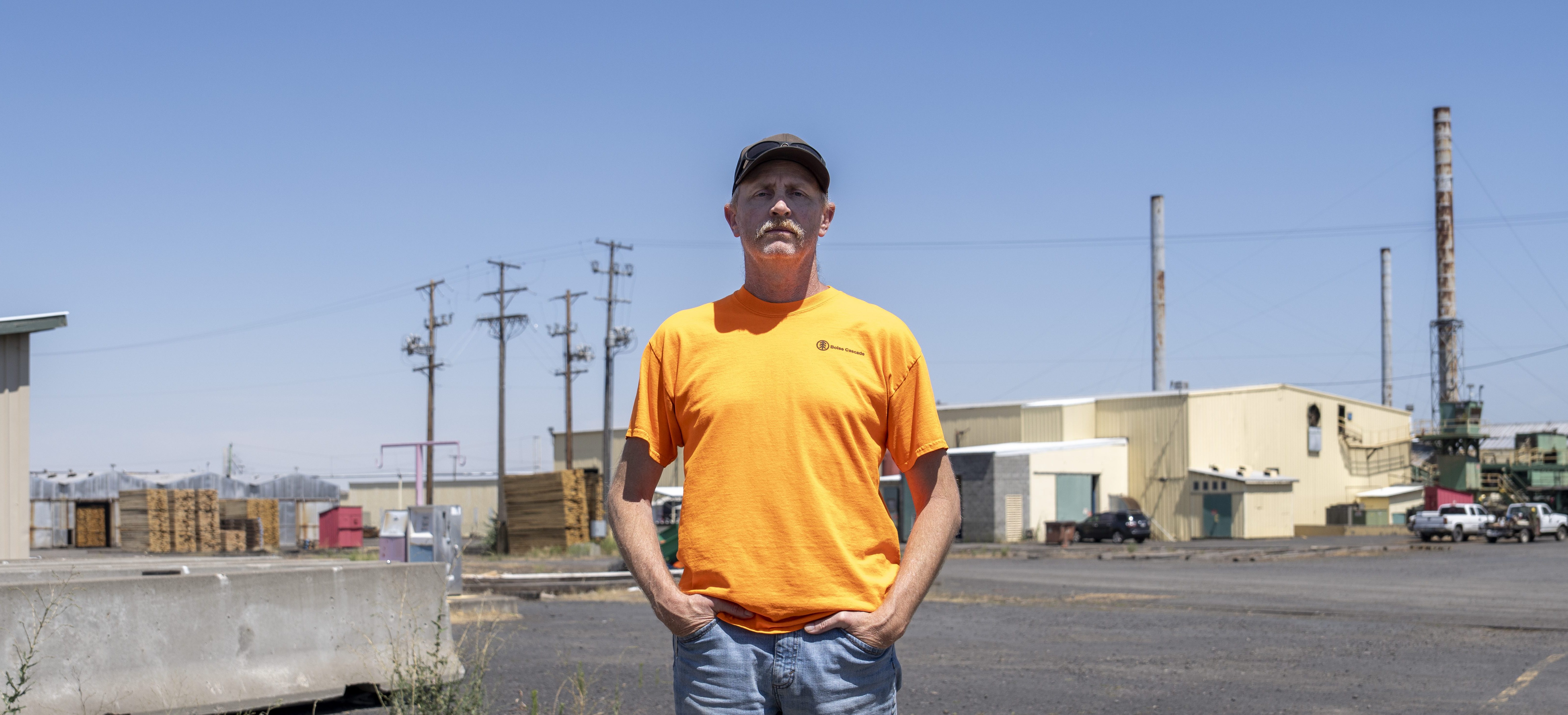Pacific Northwest researchers developing low-cost virtual fence
Published 8:30 am Monday, January 16, 2023

- Karen Launchbaugh, director of the University of Idaho Rangeland Center, visits with Benton Glaze, a university extension beef specialist, and others on Jan. 11, 2023, at the university’s Range Livestock Symposium in Twin Falls, Idaho.
TWIN FALLS, Idaho — Researchers at the University of Idaho and Washington State University are teaming up to develop a low-cost virtual fence system that will work in rugged terrain.
Ranchers say it will be a game changer, said Karen Launchbaugh, director of the University of Idaho Rangeland Center.
Trending
The work is just beginning, and there’s a lot to learn, she said during the U of I’s Range Livestock Symposium in Twin Falls, Idaho.
Barbed wire entered the picture in 1874 as a way to control cattle movement, and at one time was a really amazing technology. Electric fencing came about in the 1930s as another innovation, she said.
“The newest kid on the block is virtual fence,” she said.
With a virtual fence system, a computer map communicates with a base station, and there’s always communication between the fence, the base station and GPS. It can protect riparian areas, be used in areas that are hard to fence and facilitate targeted grazing without obstructing wildlife corridors and frustrating recreationists — as well as solve the problem of gates left open, she said.
“So there are a lot of things people could get behind,” she said.
But it’s really expensive, she said.
Trending
Commercial virtual fence systems deliver an electric shock to an animal’s neck when it approaches a virtual barrier. They require collars for the animals — which fall off or can be rubbed off — cell service, a subscription for GPS data, costly signal towers, routine updates and battery replacement and recharging. The equipment costs up to several hundred dollars per animal.
The new technology under development at the universities aims to provide a low-cost tool for livestock and land management that performs reliably in mountainous western states, where existing virtual systems struggle to provide reliable GPS data.
While GPS, cell service and battery technology are improving, those barriers led the university developers to reconsider using radio wave and lightweight electronic ear tags. The ear is more sensitive than the neck and would take half as much energy to shock the animal, she said.
The virtual fence system under development uses proximity sensing technology that functions in mountainous terrain and shocks the ear. Both changes can make the system cheaper, more durable and use less energy.
“I think we’re heading the right way,” she said.
The universities’ focus is keeping animals out of riparian areas, but virtual fence has other benefits such as tracking cows and keeping animals out of dangerous areas such as roads, she said.
Some early studies with small numbers of animals have been successful.
“There’s never 100% containment, but it could work,” she said.
The University of Idaho tested a virtual fence system on 20 young bulls, and all the animals stayed within the boundaries on the fourth day of the trial.
But some cattle — about 10% — are untrainable. Others outsmart the system by shocking themselves a lot to run down the battery on the collar, so some cattle will still have to be moved, she said.
Last summer, the project received a $1 million grant from USDA National Institute of Food and Agriculture to test the safety and efficacy of a prototype.








